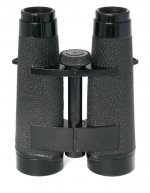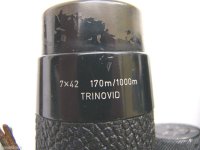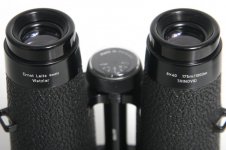John A Roberts
Well-known member

Hello All,
A while ago I did some basic research so that I could wrap my head around Leitz’s Trinovid models.
I’ve attached a couple of tables:
- the first outlines introductions and basic visual identification, and;
- the second goes into greater detail including serial numbers.
Keep in mind that this is preliminary work, so it’s going to be both incomplete and have inaccuracies. However, as questions about Trinovids come up all the time, I’ve decided to post both as a public service and to encourage others to contribute.
For those that are interested, WorthPoint (a collection of info from sales sites at: https://www.worthpoint.com ) was particularly useful in compiling the tables.
John
A while ago I did some basic research so that I could wrap my head around Leitz’s Trinovid models.
I’ve attached a couple of tables:
- the first outlines introductions and basic visual identification, and;
- the second goes into greater detail including serial numbers.
Keep in mind that this is preliminary work, so it’s going to be both incomplete and have inaccuracies. However, as questions about Trinovids come up all the time, I’ve decided to post both as a public service and to encourage others to contribute.
For those that are interested, WorthPoint (a collection of info from sales sites at: https://www.worthpoint.com ) was particularly useful in compiling the tables.
John
Attachments
Last edited:






